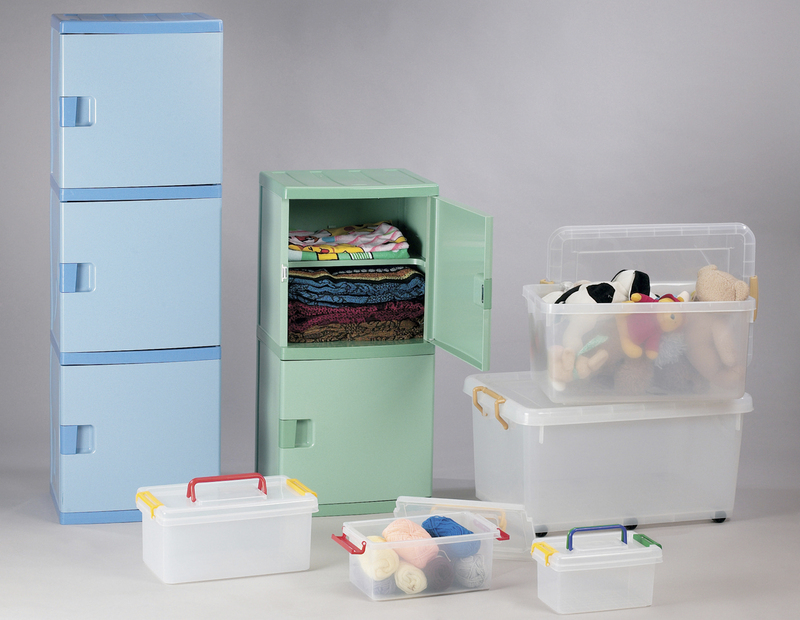Packing Fragile Items: Tips for a Damage-Free Move
Preparing for a move is always a challenge, but packing fragile items introduces a whole new level of stress and responsibility. No one wants to arrive at their new home only to find prized possessions shattered beyond repair. Whether it's delicate glassware, cherished heirlooms, or high-tech gadgets, your fragile belongings require special attention and the correct techniques. This comprehensive guide provides professional advice, expert tips, and step-by-step strategies for packing fragile items, ensuring your move is as smooth and damage-free as possible.
Why Is Proper Packing Crucial for Fragile Belongings?
Fragile items--by their very nature--are susceptible to chips, cracks, and breakages during the moving process. Changes in temperature, rough handling, and vibrations inside the moving truck can all contribute to potential damage. Packing delicate items with care doesn't just protect your belongings; it saves you from unnecessary heartache and additional costs replacing sentimental or valuable pieces.
Main Risks Associated With Moving Fragile Goods
- Impact & Vibration: Sudden jolts can shift and break items not securely packed.
- Crushing: Stacking heavy boxes on top of light, fragile boxes can cause serious damage.
- Temperature Extremes: Some materials (like ceramics or electronics) can suffer when exposed to high heat or freezing cold.
- Moisture: Water-sensitive items might warp, swell, or rust if not packed correctly.
By understanding these risks, you can implement the best fragile packing solutions tailored to your unique items and moving conditions.

Essential Packing Supplies for Fragile Items
Using the right materials is the first step to packing breakables for moving successfully. Invest in high-quality packing supplies to provide your valuables with maximum protection.
List of Recommended Packing Materials
- Sturdy Cardboard Boxes: New double-walled boxes are ideal for strength. Avoid reused or damaged boxes for your most fragile goods.
- Bubble Wrap: The air pockets provide superior cushioning for delicate objects like glass, porcelain, and electronics.
- Packing Paper: Soft, ink-free paper that wraps and separates individual items without scratching surfaces.
- Foam Sheets or Peanuts: Great for filling gaps inside boxes.
- Strong Packing Tape: Reinforces box seams and keeps them securely closed.
- Dividers: Cardboard inserts help keep glasses, mugs, and ornaments from knocking against each other.
- Labels & Markers: Clearly mark boxes containing fragile objects so movers handle them with care.
- Plastic Bins (optional): For extra-vulnerable items, clear plastic bins add an extra layer of protection.
Step-by-Step Guide: How to Properly Pack Fragile Items
Follow these detailed steps for damage-free moving of fragile possessions:
1. Organize & Declutter
- Sort your belongings and identify which items are genuinely fragile.
- Consider donating, recycling, or discarding items you no longer need.
- Make an inventory--especially of valuables and collectibles--for insurance or personal record purposes.
2. Prepare & Reinforce Your Boxes
- Seal the base of each cardboard box with extra layers of heavy-duty tape.
- Line the bottom with crumpled packing paper, bubble wrap, or foam for extra cushioning.
- Don't forget to label the box as FRAGILE right from the start!
3. Wrapping Each Fragile Item Correctly
- Wrap items individually. Never place glassware, ceramics, or technology inside a box unwrapped.
- For glassware or stemware: Insert packing paper or bubble wrap inside each piece before wrapping the outside.
- Secure with tape to ensure wraps do not come undone during transit.
- For plates: Wrap each plate and stack them vertically, not flat, with cushioning in between.
- Electronics: Remove batteries, secure cords, and use anti-static wrap for sensitive components.
4. Box Packing Techniques
- Heaviest items go on the bottom, with lighter, smaller items on top.
- Never overcrowd boxes. If in doubt, split into two boxes rather than risk damage.
- Fill empty spaces with foam peanuts, crumpled paper, or extra bubble wrap to prevent shifting.
- Maintain a snug but not tight arrangement; items shouldn't move but shouldn't be forced in.
- Seal boxes securely and double-check the tape on top and bottom before moving.
5. Label Everything Clearly
- Use bold, large writing or bright labels saying "FRAGILE" and "THIS SIDE UP".
- Specify what's inside: e.g., "Wine Glasses" or "Antique Figurines."
- Indicate the room or location for easy sorting in your new home.
Expert Tips for Packing Special Types of Fragile Items
Glassware and Stemware
- Always use cell boxes or partitioned sections designed for glasses.
- Wrap each piece in bubble wrap and place some paper inside for structural support.
- Never stack glassware inside each other unless separated by paper or foam.
Dishes and Plates
- Wrap plates individually and always pack vertically like vinyl records.
- Add plenty of soft material between items and on all sides of the box.
- Don't forget to fill all voids to prevent movement.
Electronics and Gadgets
- Retain original packaging if you have it as it offers the best fit and shock resistance.
- Bundle up cords and accessories separately, labeling as you go.
- Protect sensitive screens with foam sheets or anti-static wraps.
Artwork & Mirrors
- Wrap in non-acidic paper, followed by bubble wrap.
- Use mirror or artwork boxes--these are specially sized for wall hangings.
- Mark the glass with a big X in masking tape to help absorb shock.
Collectibles & Antiques
- Consider custom crating for extremely valuable or irreplaceable pieces.
- Insure your items and photograph them for documentation.
- Avoid newsprint that may transfer ink and damage surfaces.
Avoiding Common Mistakes in Fragile Item Packing
Even experienced movers make errors when trying to protect delicate items during relocation. Here's what NOT to do:
- Overpacking boxes, increasing the risk of breakage when lifting or moving.
- Using the wrong packing materials, such as newspaper for items that can stain, or old boxes that might collapse.
- Skipping labeling, which can lead to rough handling by movers or yourself.
- Ignoring the importance of double-wrapped padding for precious possessions.
- Leaving empty spaces inside boxes--any movement is bad news for fragile objects!
Bonus Tip:
Do not tape bubble wrap directly onto delicate surfaces; the adhesive may peel paint, finishes, or stick to glass. Instead, secure bubble wrap over a layer of packing paper.
Making the Move: Transport Tips for Fragile Boxes
Once your fragile items are safely packed, you're not done yet! Transporting them requires careful handling and planning.
- Load fragile boxes last so they stay on top of heavier, sturdier items.
- Keep delicate boxes away from doors and high-traffic zones in the moving vehicle to reduce handling.
- Secure them tightly using straps or between larger, soft items like linens or cushions.
- If moving yourself, pack fragile goods in your own car for extra attention.
- Inform professional movers which boxes contain breakable items and point out the most valuable ones for extra caution.
Unpacking: Ensuring Damage-Free Arrival
Unpacking carelessly is a common pitfall. Take your time to ensure a damage-free move for your fragile items:
- Choose a clean, flat surface to unpack delicate pieces.
- Unwrap individually and inspect each item before putting it away.
- Don't rush the process--avoid placing fragile pieces in an unstable area.
- Dispose of packing materials responsibly; consider reusing bubble wrap or boxes for storage or future moves.

Frequently Asked Questions About Packing Fragile Items
Can I use clothes or towels to wrap breakables?
Yes, soft clothes and towels can help cushion fragile objects, especially for short moves. However, they are not as effective as dedicated packing materials for preventing sharp impacts.
Are plastic bins safer than cardboard boxes for delicate items?
Plastic bins offer excellent protection from moisture and crushing. They are ideal for electronics or keepsakes but may not provide as much shock absorption as properly padded cardboard boxes.
How much padding is enough?
Always err on the side of caution. If you can gently shake the packed box and nothing shifts or rattles, you have likely used enough padding. For glass or highly valuable items, double-wrap and double-box for extra security.
Final Thoughts: The Secret to Packing Fragile Items Successfully
Packing fragile items is both a science and an art. By investing in quality materials, planning your packing process, and adopting proven techniques, you minimize the risk of loss or damage during your damage-free move of breakable belongings. The extra time and care taken to properly pack glassware, ceramics, electronics, and collectibles pays off the moment you see your cherished items arrive safely in your new home.
Remember: No shortcut is worth the replacement cost or the sentimental loss of something broken. Treat each fragile item with the attention it deserves, and your next move will be remembered not for what was damaged, but for how smoothly everything arrived intact.
Your journey to a damage-free move starts with thoughtful packing. Use these tips, and your fragile items will thank you!



